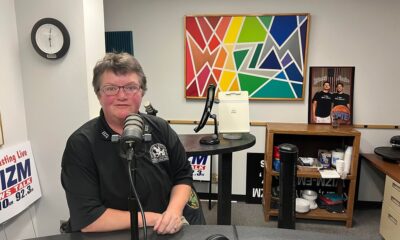News
State wildlife representatives set priorities for controlling CWD
A disease impacting wildlife spurred an unprecedented gathering in Madison. Chronic Wasting Disease (CWD) is spreading among deer populations. The fatal disease was first found in Wisconsin in 2002, according to the Wisconsin Department of Natural Resources. CWD is a contagious neurological disease of deer, elk and moose that is caused by an abnormal protein called a prion. These prions cause brain degeneration in infected animals and lead to extreme weight loss, abnormal behavior and loss of bodily functions. Now, there are 56 CWD affected counties across the state.
Wildlife professionals from 12 Midwestern states, members of Wisconsin Tribal Nations, plus state and federal conservation groups met in Madison this week to discuss preventing the spread of CWD. The two-day working meeting hosted by the Wisconsin DNR focused on the latest data available on how CWD is affecting each states’ wild deer population as well as disease management strategies and collaboration opportunities.
“I applaud the many states, Tribal Nations and conservation groups who joined us in Madison to have a significant dialogue around the management of this disease,” Preston Cole, Wisconsin DNR secretary-designee, said. “I am humbled by what I have heard and am hopeful the promises of a shared commitment to get ahead of this insidious disease will be kept.”
Established priorities from the meeting included expanded research into testing methods, an increased evaluation of management actions, and enhanced collaboration on management and communication.
The group agreed there is a need for more advanced research into testing methods that do not require lymph node material. The desire is to develop live animal testing methods that use alternative tissue.
While many states are initiating control actions, such as management zones and restrictions on carcass disposal, few have evaluated these actions to determine efficacy. The group agreed there is a greater need for empirical data to establish whether these actions are effectively controlling CWD.
Those in attendance also agreed there is a need for more consistent communications across state lines about each state’s CWD management rules and how to inform hunters about how to comply with those rules. This collaboration especially comes into play when new CWD detections are made near state borders.
Word of the DNR meeting spread to the South East Association of Fish and Wildlife Agencies about the success of the Midwest CWD Collaboration Meeting, which prompted them to schedule a similar event in Mississippi next month.







